Apparently there is a conflict with the Khion name for another product so the boot was renamed the Beast for next year (2017), although I prefer calling them Stormtroopers. As my friend Cesare pointed out, and who can deny, they look like the sort of boots worn by Darth Vader’s white stormtroopers. While they were at it, Dynafit did more than change the name.
Downhill Chops
As any good stormtrooping boot should, these boots kick butt. They’re stiff, but thanks to a change in the plastic, not so stiff that you felt like you hit a brick wall and the cuff simply won’t budge. Rather, it is a no-apologies-made cuff that requires lots of forward pressure, but the harder you push, the further it flexes. In other words, a classic progressive flex.
In comparing the Khion of last year with the Beast of next, a review of the cuff changes would suggest the Beast is even stiffer than the Khion of yore. Several mods were made to improve the coupling between the cuff and the lower shell, thus making it potentially stiffer. However, the lower shell is no longer Grilamid, but Pebax2. It is stiffer than the Pebax you may be used to, allowing manufacturers to sculpt it by thickness to vary stiffness and save weight. Though stiffer than Pebax, it is inherently more elastic, though not by much, than Grilamid. The end result is the lower shell has a slight amount of give, which yields a progressive flex via your legs. And weight-wise, it’s on par with Grilamid, perhaps a smidge heavier, but the smoother flex is worth it.
Besides tighter coupling between the magnesium spoiler and the carbon reinforced cuff, there is a tongue that extends from the lower shell up the front of the cuff. When cinched tight, this adds a direct link between leg forces and the lower shell. The bottom line, if you demand power in a downhill boot, even your backcountry boot, the Beast eliminates the compromises you’ve come to expect.
Liner
The Beast liner is a much simpler affair this year, replacing the BOA lacing with simple eyelets if you insist on snugging down your liner. The ability for the BOA liner system to cinch down around a complex shape and hold that pressure deserves all the praise it gets but in my opinion this function is better used around the foot as exemplified with Fischer’s Traverse boot, or Scarpa’s F1. Besides, it increased the fiddle factor on a brand that doesn’t need a four-piece string quartet to accompany every product. The fewer fiddles per product, the better.As you would hope, the liner is heat moldable, has a reinforced tongue, and a zone of softer foam above the heel so it flexes easier to the rear when skinning.
Fit
The last width in the metatarsal zone is 102mm wide (sz 27). It is paired with an instep that favors feet with average to modestly high insteps. Although I have a pancake shaped forefoot it didn’t take much to adapt by raising my foot a bit and adding a pad of foam over my instep to hold my heel in place, so it has a fairly wide range range of feet it will fit.
Buckles
There are a lot of things to like about the buckles on the Beast. For starters, they all close to the inside, or center of the boot, opposite the common way of closing outside and down. This puts them in the center of the boot when closed, preventing them getting side swiped by a rock or stump. It also gives more leverage for tightening down, and is easier to open, once you adapt to the reversed motion.If there is anything to complain about with the buckles it is the plastic safety bars that keep the wires in the ladder position when you open them up. For starters they don’t prevent moving the wire to a new position when the buckle is loose. I don’t have a problem with that so much since that allows the cuff buckles to become even looser without the wire flopping off the ladder completely. However, the plastic gate holding the wire easily comes off itself so then you need to put all the pieces together again. It needs to snap down tighter like the plastic gate of the TLT series buckles.
Cuff ROM
The range of motion for the cuff of the Beast doesn’t set any records for mobility. Nearly any other Dynafit boot, or a competitor’s rando race boot will yield more range of motion fore and aft. However, considering how solid the downhill connection is, the Beast is no slouch when it comes to providing adequate touring range of motion, especially if you’re using high heels when skinning.
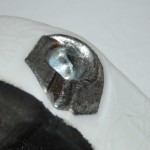
Front is to the left. Metal is built up along the back and top of the rim, above the Quick-Step bumper.
Insert Minutia
The Beast will come equipped with Dynafit’s new Master series inserts. At the toe this means the wall around the rim of the cone is built up on theWho is it for?
Anyone who is looking for a boot that doesn’t compromise on downhill performance with a weight that is light enough for long days in the backcountry where turns are the goal, and lots of ’em, will find the Beast compelling. Lighter boots will obviously tour better, but they can’t hold a candle to the Beast’s ability to not only power through turns, but stick a few landings while harnessing gravity.
Dynafit
The Beast
MSRP: $900
Weight/boot (mondo 27): 1500 g • 3 lbs., 5 oz.
Sizes available: mondo 25-30 (men) • mondo 23-27.5 (women)
© 2016

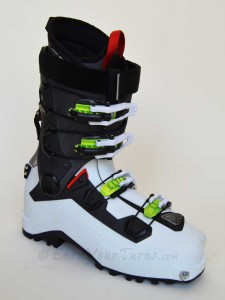
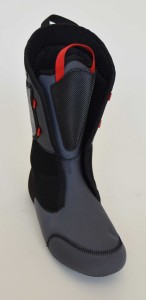
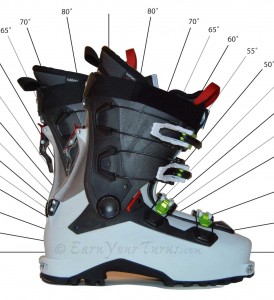
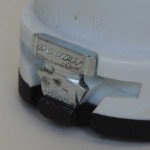
10 comments
Skip to comment form
Do you know if the Master Step heel insert will be compatible with Kingpin bindings ?
Dynafit’s Master Step heel insert is designed to eliminate the need for the add on heel piece formerly used to help with the step-in function on their Beast binding. To be compatible with the Kingpin the boot in question needs to have a wide enough lip on the heel step to work with a standard alpine binding, and by extension then, a Kingpin as well. Hope that is clear. IOW – the compatibility of a boot with Kingpin is independent of the heel insert, only on the dimensions of the heel “step”, or platform.
It looks like the Khion has been renamed the FT1 in Europe at least, and is available under that name for preorder for the 16-17 season.
As of yesterday Dynafit has recalled all Khion boots sold in North America for refund or replacement with this new boot, which they are now calling the Beast again, rather than the FT1.
Any insight into what the ‘potential safety issue’ with Khions is?
Did they make any changes to make the boot easier to put on and take off? I tried a pair on and getting in and out was a painful experience.
According to the report on WildSnow it relates to the boot switching to walk mode under extreme flex, such as a big drop. There are also comments that the problem is worse on the larger sizes, indicating an issue with the materials.
They eliminated the BOA lacing on the liner, which makes getting in and out substantially easier.
I dont think the major issue was the BOA. Although it made the matter worse by not opening the tongue enough – it is pain in the ass even if you put on liners first. The major factor here is the grilamid boot “flaps” which cover your foot just above the instep. They are so firm, that you cannot slip your foot inside, even through quite a pain. I thought that i would get used to putting the liners first, but it is pain in the ass to carry them separately. And if i put liners into empty boots – the liners get worn at the heel pretty quickly. The final flaw was when the buckle catcher snapped.
I fear Beast uses same buckles+catchers – it is especially ugly when fastening to the last position – the buckle leverage is quite large.
Good news is that other users reported Beasts dont have the issue with stepping in barefoot anymore – most likely due to using pebax as shell material.